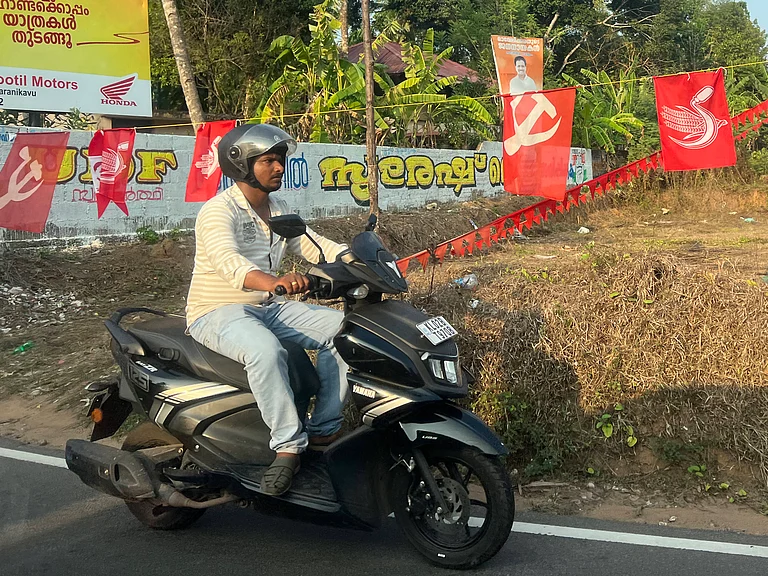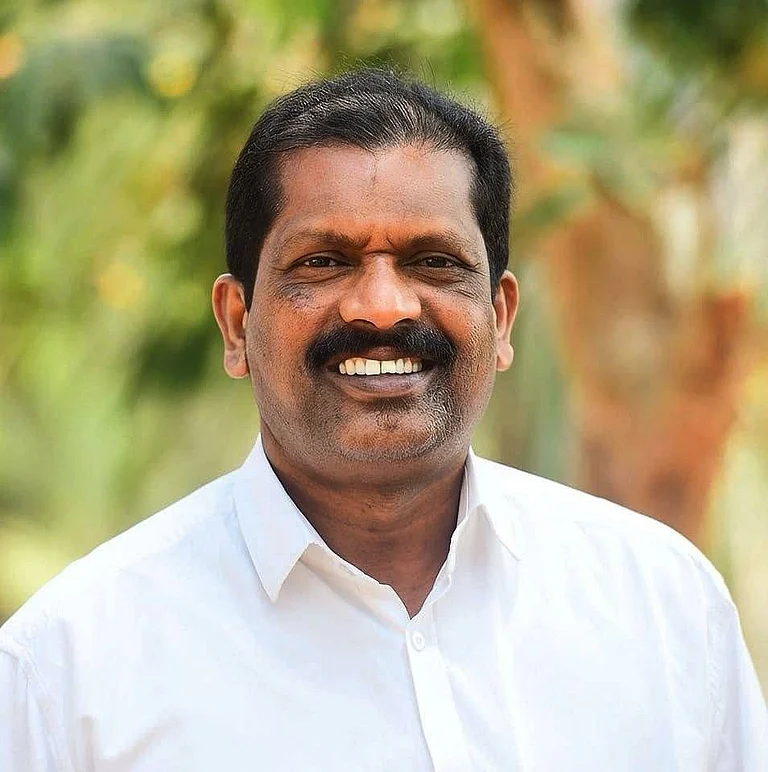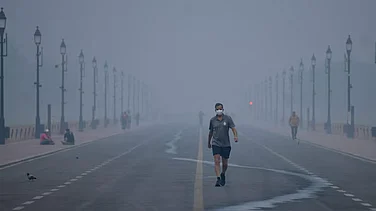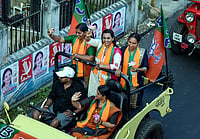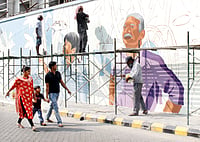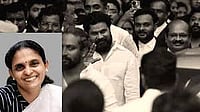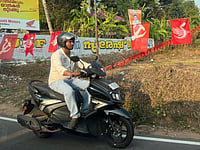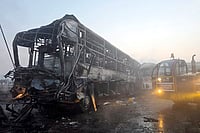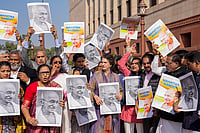
Extreme Poverty Eradication declaration divides Kerala society; those who support and oppose engage in bitter exchanges
For Adivasis, loss of land is the root of their deprivation. Despite laws and welfare programmes, most remain landless
Kerala’s robust social safety net — from universal healthcare to decentralised welfare delivery — has helped eliminate the most acute forms of deprivation-argues the government
On November 1, as Kerala marked its state formation day with a grand event in Thiruvananthapuram, the government made an announcement of historic weight — it declared that the state had eradicated extreme poverty, the first in India to do so. But instead of uniting Malayalees in pride, the declaration has drawn an invisible line through the state. Politicians, academics, and social media groups are now locked in bitter exchanges over what the government’s claim actually means. Is the outrage merely a result of confusion over bureaucratic terminology — or has the administration, for political convenience, redrawn the boundaries of what it means to be “extremely poor”? In the process, the debate has brought to the surface uncomfortable questions about poverty, entitlement, and the moral limits of Kerala’s celebrated welfare model.
Come, see the deprivation!
In Wayanad, one of Kerala’s most underdeveloped districts, the announcement was met with disbelief. Among the tribal hamlets scattered across its forested slopes, poverty is not a statistic but a stubborn companion. Many families still live in makeshift huts without land rights and basic amenities. “ I don’t know what the government mean by eradication of extreme poverty. Does it mean there are no wretched people in the state? If the claim is so then it is a blatant lie”
“If this is a poverty-free state, then what are we?” asks a member of a tribal family. Activists say that despite the rhetoric of inclusion, a large number of Adivasi and coastal households remain trapped in chronic deprivation — left out of surveys, or marked as “rehabilitated” after receiving one-time aid. Their stories, they argue, expose the distance between the government’s metrics and the lived realities of Kerala’s poorest citizens.
According to the state government, the declaration was based on a four-year project led by the Local Self-Government Department, which identified and rehabilitated families living in “extreme poverty” — defined by multiple deprivations, including lack of housing, food security, healthcare, and education. The official list, finalised after extensive surveys, counted just over 64,000 families who were then provided targeted support. Government officials argue that Kerala’s robust social safety net — from universal healthcare to decentralised welfare delivery — has helped eliminate the most acute forms of deprivation. But critics say the government has relied on a narrow definition that excludes thousands still struggling on the margins. For them, the claim of “eradication” not only oversimplifies the complex realities of poverty but also risks turning human suffering into a political performance.
As economists line up on either side of the Kerala government’s declaration of having eradicated extreme poverty—some hailing it as a milestone in welfare governance, others dismissing it as statistical sleight of hand—the debate has spilt from television studios to social media, growing shriller by the day. Cyber warriors of both the CPI(M) and the opposition parties hurl invectives, trade graphs and numbers, and weaponise data to score political points. What could have been a serious discussion on the nature of deprivation has descended into a noisy digital crossfire.
Realities in Hamlets
But hundreds of kilometres away from these virtual arenas, in the forested hamlets of Wayanad and Attappady, life moves to a different rhythm—one defined not by debates, but by deprivation. Here, the idea of “eradicating extreme poverty” feels abstract, even alien.
For the tribal families who inhabit these margins, the academic hair-splitting over whether poverty is “extreme” or “not so extreme” holds little meaning. “What difference does it make if they call it extreme or moderate?” asks Manikuttan Paniyan, an MBA graduate from a Paniya tribal settlement, who juggles his private job with social work for his community. “There is only one thing you can see in our hamlets—people living with extreme deprivations.”
Manikuttan’s words cut through the noise of the political and academic discourse, exposing the distance between the rhetoric of development and the reality on the ground. For people like him, poverty is not a category to be measured, but a condition to be endured—one that no announcement or celebratory event can wish away.
The government’s ambition to eradicate extreme poverty was first articulated in the very first cabinet meeting of the incumbent administration. Officials say the mission was pursued through an extensive data-driven exercise involving local self-governments. Around four lakh trained enumerators—supported by panchayat officials and Kudumbashree workers—were deployed across the state to identify families living in extreme deprivation. Once the households were mapped, tailor-made intervention plans were designed to address their specific needs, ranging from housing and healthcare to education and livelihood support. According to the government, a monitoring mechanism has also been put in place to ensure that those lifted out of extreme poverty do not relapse into it again.
“But none of them have come to our hamlets,” says Manikuttan, his tone betraying both frustration and disbelief. K. Ammini, a social worker who has been working in the region for over a decade, says that if the enumerators had actually visited the settlements, they would have seen the truth for themselves. “Had they gone to those dilapidated shelters, they wouldn’t be living in this condition now,” she says.
In Attappady, Kerala’s only tribal taluk, the reality on the ground tells a story far removed from the government’s triumphant claim. Across the parched hills and scattered hamlets of Attappady, many tribal families continue to live in extreme deprivation. “I know several people who don’t even have ration cards or Aadhaar cards, especially in panchayats like Agali,” says another social worker. In some hamlets, residents share that they still lack toilets and access to safe drinking water.
Panchayat officials, however, offer a bureaucratic explanation. They say that some families might not have been included on the list of extreme poverty eradication because they are already beneficiaries of another welfare programme.
The Landlessness and Poverty
Kerala has a tribal population of about 4.84 lakh people spread across 1.07 lakh families—roughly 1.45 per cent of the state’s population—living in 4,762 villages. The majority of them are concentrated in the hilly districts of Wayanad, Palakkad, and Idukki. Among the many issues confronting the community, landlessness remains the most persistent and defining one.
For the Adivasis, land is not merely an economic asset but the foundation of their existence—central to their livelihood, culture, and identity. For generations, they depended on agriculture and forest produce for survival. But over time, most lost their land through encroachment, forced displacement, and legal neglect. Historically, tribal communities owned vast tracts of land in the districts of Wayanad, Palakkad, and Idukki. Post-Independence policies, however, did little to protect these rights. The influx of non-tribal settlers from the plains, aided by political indifference, further accelerated dispossession.
In 1975, the state enacted the Kerala Scheduled Tribes (Restriction on Transfer of Lands and Restoration of Alienated Lands) Act, aimed at preventing the transfer of tribal lands to non-tribals and restoring those that had already been alienated. But successive governments failed to frame the necessary rules to implement it effectively. Later, amendments diluted the Act’s core intent, rendering it largely toothless in ensuring the return of lost lands.
Despite a succession of welfare schemes and development programmes that have lifted sections of the tribal population, landlessness continues to haunt the majority. It remains the unhealed wound at the heart of Kerala’s tribal question—a problem that decades of policy promises have failed to resolve.
The issues pointed out by Manikuttan, Amini, and others living in the tribal area stem from this basic issue.
“They are celebrating by proclaiming that they have eradicated extreme poverty. I don’t even know what that means,” says Manikuttan, his voice rising with frustration. “We are living in a cramped room without a proper toilet or access to clean water. Are we destined to end our lives as despicable creatures — or merely as fertilisers that help others flourish?”
Manikuttan’s righteous indignation cannot be answered by academic technicalities or administrative chest-thumping. His question pierces through the official narrative, exposing the distance between the state’s claims and the lived reality of those still trapped in deprivation.









